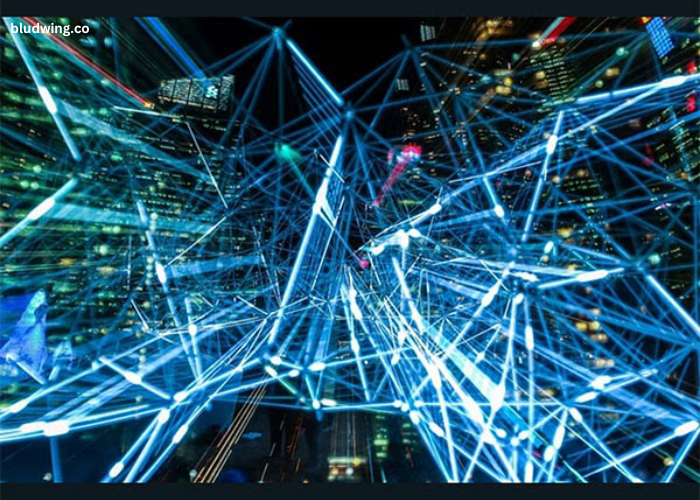The digital world is undergoing a transformation, fueled by advancements in connectivity, automation, and artificial intelligence (AI). At the forefront of this revolution is 5G technology, which promises to reshape how we interact with the digital landscape. From faster internet speeds to real-time data transfer, 5G is providing the foundation for the next wave of innovation. However, 5G is just the beginning. Emerging technologies such as AI, the Internet of Things (IoT), augmented reality (AR), and virtual reality (VR) are working in tandem with 5G to revolutionize industries, enhance user experiences, and redefine the future of digital communication.
In this article, we’ll explore how 5G is changing the digital world and how these technologies are driving the future of innovation, making our lives more connected, efficient, and exciting than ever before.
Key Points:
- 5G technology is providing the speed, capacity, and low latency necessary for advanced digital experiences.
- Emerging technologies such as AI, IoT, and AR/VR are enhancing the digital world by improving automation, interaction, and immersion.
- The combination of 5G and these technologies is revolutionizing industries from healthcare to entertainment.
How 5G is Revolutionizing Connectivity
5G technology is not just about faster internet speeds; it’s about providing the infrastructure needed for a new generation of connected devices and digital experiences. As the fifth generation of mobile networks, 5G brings significant improvements over its predecessors in terms of speed, capacity, and low latency.
1. Unprecedented Speeds and Data Transfer
The most notable feature of 5G is its speed. With potential download speeds of up to 100 times faster than 4G, 5G enables lightning-fast data transfer. This is particularly important for applications that require high data bandwidth, such as streaming high-definition videos, online gaming, and virtual reality (VR) experiences. Users can expect to download large files in mere seconds, making it easier to access content and services on-demand.
For businesses, the enhanced speed means that cloud computing, video conferencing, and remote collaboration tools will function more smoothly, allowing employees to work more efficiently, no matter their location. As businesses continue to rely on digital tools, 5G will become the backbone of their operations.
2. Low Latency for Real-Time Communication
Another key benefit of 5G is its extremely low latency, or the delay in sending and receiving data across the network. With latency as low as one millisecond, 5G enables real-time communication and interaction, which is crucial for applications like telemedicine, online gaming, and autonomous vehicles. For example, remote surgeries and real-time health monitoring will become more feasible with the low-latency capabilities of 5G, allowing doctors to perform procedures with high precision, even from a distance.
In the world of entertainment, 5G’s low latency will support live-streaming events, such as concerts or sports games, with minimal delay, giving audiences a more immersive experience. The ultra-low latency of 5G will be a game-changer for industries that rely on real-time data processing and decision-making.
3. Increased Network Capacity for IoT and Smart Devices
The digital world is becoming increasingly connected, with billions of devices linked through the Internet of Things (IoT). 5G’s increased network capacity ensures that more devices can operate simultaneously without affecting network performance. This is vital for applications like smart homes, where devices such as thermostats, security cameras, and smart refrigerators need to communicate with each other to create a seamless user experience.
Moreover, in smart cities, 5G enables the efficient operation of connected infrastructure, such as traffic lights, waste management systems, and energy grids. This will result in better resource management, reduced waste, and improved public services, contributing to the creation of smarter, more sustainable urban environments.
The Role of Emerging Technologies in the Digital Revolution
While 5G lays the foundation for a connected future, emerging technologies such as AI, IoT, and AR/VR are playing a crucial role in accelerating the digital revolution. These technologies are enhancing the digital world by providing more automation, immersive experiences, and deeper insights.
1. Artificial Intelligence (AI): Enhancing Automation and Decision-Making
AI is revolutionizing industries by enabling machines to learn, adapt, and make decisions based on data. Whether it’s in customer service, healthcare, finance, or manufacturing, AI is transforming how businesses operate and interact with consumers. In customer service, AI-powered chatbots and virtual assistants are providing 24/7 support and personalized recommendations, making it easier for businesses to engage with their customers.
AI is also making strides in healthcare by assisting with diagnostics, predicting disease outcomes, and personalizing treatment plans. For instance, AI algorithms can analyze medical images and detect signs of conditions like cancer or heart disease more quickly and accurately than human doctors. In the manufacturing sector, AI-driven automation is improving production efficiency, reducing costs, and enhancing product quality.
2. Internet of Things (IoT): Connecting Devices and Enhancing Experiences
The IoT is creating a world where everyday objects can communicate with each other and with humans. With 5G providing the necessary network capacity, IoT devices are becoming more interconnected and intelligent. In smart homes, IoT devices can learn from user behavior and adjust settings to enhance comfort, security, and energy efficiency. For example, smart thermostats can automatically adjust the temperature based on the time of day or the user’s preferences, while smart locks can provide secure, keyless entry.
In industries such as agriculture, IoT is being used to monitor soil conditions, water levels, and crop health, allowing farmers to make data-driven decisions and optimize their operations. In manufacturing, IoT-enabled sensors are monitoring machinery in real time to predict maintenance needs and prevent costly breakdowns.
3. Augmented Reality (AR) and Virtual Reality (VR): Immersive Experiences
AR and VR are transforming how we interact with the digital world, making it more immersive and interactive. While VR creates entirely simulated environments, AR overlays digital elements onto the real world. Both technologies are already being used in gaming, entertainment, and education, but their applications extend far beyond that.
In healthcare, AR is being used for training medical professionals by providing virtual simulations of surgical procedures, while VR is enabling remote consultations and therapy sessions. In retail, AR is allowing customers to try on clothes or visualize furniture in their homes before making a purchase. In education, both AR and VR are enhancing learning experiences by providing interactive, 3D content that makes complex subjects easier to understand.
How 5G and Emerging Technologies Are Transforming Industries
The convergence of 5G and emerging technologies is driving innovation across various industries. Here’s a look at how some sectors are being revolutionized:
1. Healthcare: Telemedicine and Smart Health Devices
Telemedicine is becoming more widespread thanks to 5G, which enables high-quality video consultations between doctors and patients. With IoT-connected health devices and AI-driven analytics, doctors can monitor patients’ health in real time, providing timely interventions. For example, wearable devices can track vital signs like heart rate and blood pressure, sending the data to doctors for analysis.
Additionally, 5G’s low latency makes it possible for surgeons to perform remote surgeries with robotic systems, which could significantly expand access to specialized healthcare in remote areas.
2. Transportation: Autonomous Vehicles and Smart Infrastructure
5G’s ultra-fast speeds and low latency are critical for the development of autonomous vehicles. These vehicles rely on constant communication with their surroundings to navigate safely. With 5G, self-driving cars can exchange data in real time, allowing them to make immediate decisions and avoid potential hazards.
In smart cities, 5G and IoT devices will work together to optimize transportation systems, reducing traffic congestion and improving safety. Smart traffic lights, for instance, will be able to adjust their timing based on traffic flow, reducing wait times and improving overall efficiency.
3. Entertainment: Gaming and Immersive Experiences
In the entertainment industry, 5G’s fast speeds and low latency will revolutionize online gaming, allowing players to experience lag-free, high-definition gameplay. AR and VR will also offer more immersive experiences, enabling users to step into fully interactive virtual worlds. As 5G expands, new forms of entertainment, such as holographic concerts and interactive live events, will become possible.
The Future of the Digital World: What’s Next?
While 5G and emerging technologies are already making a significant impact, the future holds even greater potential. We can expect the digital world to become increasingly interconnected, intelligent, and immersive. With AI, IoT, and AR/VR continuing to evolve, new applications will emerge, further revolutionizing industries and enhancing our daily lives.
As we move toward the future, it’s important to continue investing in the infrastructure, security, and policies that will ensure these technologies benefit everyone, while also addressing challenges like data privacy and cybersecurity.
FAQ’s
1. How does 5G benefit the digital world?
5G provides faster speeds, lower latency, and greater network capacity, which enables real-time communication, improved connectivity, and the growth of IoT and smart devices.
2. What is the role of AI in the digital world?
AI enhances automation, decision-making, and personalized experiences across industries like healthcare, retail, and finance, making processes more efficient and data-driven.
3. How does IoT improve our daily lives?
IoT connects devices, allowing them to share data and interact intelligently, improving efficiency and convenience in areas like home automation, healthcare, and agriculture.
4. What are the applications of AR/VR in the digital world?
AR/VR is transforming entertainment, education, healthcare, and retail by providing immersive, interactive experiences that enhance learning, shopping, and medical procedures.
5. How will 5G impact industries like healthcare and transportation?
5G will enable remote surgeries, real-time health monitoring, autonomous vehicles, and smart city infrastructure, transforming how we access healthcare and travel.




